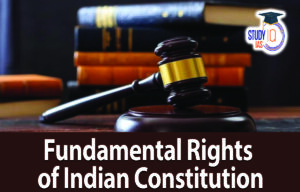Table of Contents
Some of the country’s most prominent leaders have held the position of deputy prime minister. Although it is not a constitutional position, senior politicians have been assigned the role to assist the Prime Minister and balance political power in the government. This article presents a detailed list of all the Deputy Prime Ministers of India, their tenure, and key contributions.
Deputy Prime Minister of India 2024
Currently, there is no deputy prime minister of India. Last, Lal Krishna Advani was elected as the deputy prime minister, but the position has remained vacant since May 23, 2004, following the tenure of Lal Krishna Advani as the last Deputy Prime Minister. Since then, successive governments have not appointed anyone to the position, and the role has not been officially filled.
What is the Role of the Deputy Prime Minister in India?
The Deputy Prime Minister is typically the second-in-command in the government, acting as a senior Cabinet member and sometimes managing specific portfolios. While the position does not carry any constitutional mandate, it is often seen as a mark of authority and political importance. The appointment depends on the discretion of the ruling party and the Prime Minister.
Deputy PM of India List
| S.no | Deputy Prime Minister | Tenure | Political Party | Notable Achievements |
|---|---|---|---|---|
| 1 | Vallabhbhai Patel | 15 Aug 1947 – 15 Dec 1950 | Indian National Congress | Integral role in integrating princely states into India. Served as Minister of Home Affairs and Information and Broadcasting. |
| 2 | Morarji Desai | 13 Mar 1967 – 19 Jul 1969 | Indian National Congress | Later became Prime Minister. Notable for economic policies and fiscal management. |
| 3 | Chaudhary Charan Singh | 24 Jan 1979 – 16 Jul 1979 | Janata Party | Advocated for agricultural reforms and rural development. Served as Minister of Finance. |
| 4 | Jagjivan Ram | 24 Jan 1979 – 28 Jul 1979 | Indian National Congress | Prominent Dalit leader. Contributed to national security as Minister of Defence. |
| 5 | Yashwantrao Chavan | 28 Jul 1979 – 14 Jan 1980 | Indian National Congress (Urs) | Played a crucial role in maintaining internal security as Minister of Home Affairs. |
| 6 | Devi Lal | 02 Dec 1989 – 01 Aug 1990 | Janata Dal | Focused on agricultural reforms and rural development as Minister of Agriculture. Later served as Minister of Tourism. |
| 7 | Devi Lal | 10 Nov 1990 – 21 Jun 1991 | Samajwadi Janata Party (Rashtriya) | Served a second term, continuing efforts in agricultural and rural development. |
| 8 | Lal Krishna Advani | 28 Jun 2002 – 22 May 2004 | Bharatiya Janata Party | Oversaw significant legislative reforms and national security measures as Minister of Home Affairs. |
Post of Deputy PM of India
The post of Deputy Prime Minister of India, while not constitutionally mandated, holds significant importance in the country’s political hierarchy. Here’s an overview of the Deputy Prime Minister’s role and significance:
Position Overview
Deputy Head of Government
The Deputy Prime Minister serves as the second-highest-ranking minister in the Union government’s executive branch. They assist the Prime Minister in various administrative, policy-making, and governance functions.
Senior Member of Union Council of Ministers
The Deputy Prime Minister is a senior member of the Union Council of Ministers, contributing to key decision-making processes and policy formulation.
Acting Prime Minister in Absence
One of the primary responsibilities of the Deputy Prime Minister is to deputize for the Prime Minister in their absence. During such times, the Deputy Prime Minister assumes the role of the acting head of government.
Appointment and Authority
Appointment
The Deputy Prime Minister is appointed by the Prime Minister, typically from among the senior members of the ruling party or coalition.
Authority
While the Deputy Prime Minister does not have any specific constitutional powers, their authority derives from their position as the second-in-command in the government hierarchy. They wield considerable influence in policy matters and government decision-making processes.
Historical Context
Intermittent Occupancy
Since India’s independence in 1947, the post of Deputy Prime Minister has been occupied intermittently. There have been periods when the position remained vacant, and its occupancy has varied based on political circumstances and the preferences of the Prime Minister.
Role Evolution
Over the years, the role and significance of the Deputy Prime Minister have evolved, reflecting changes in India’s political landscape and governance structures. While the Deputy Prime Minister does not hold any specific portfolio, they often play a crucial role in coordinating government activities and representing the Prime Minister on various occasions.
Deputy Prime Minister of India UPSC
- There is no Deputy Prime Minister of India as of 2024.
- The position has been vacant since May 23, 2004, following the tenure of Lal Krishna Advani.
- Despite its historical significance, successive governments have not appointed anyone to the role.
- As such, the second-highest-ranking minister in the Union government’s executive branch remains unoccupied, with the Prime Minister serving as the sole head of government.


 Pakistan-Occupied Kashmir (PoK): History...
Pakistan-Occupied Kashmir (PoK): History...
 Fundamental Rights of Indian Constitutio...
Fundamental Rights of Indian Constitutio...
 Waqf Act (Amendment) 2025: Key Highlight...
Waqf Act (Amendment) 2025: Key Highlight...






















